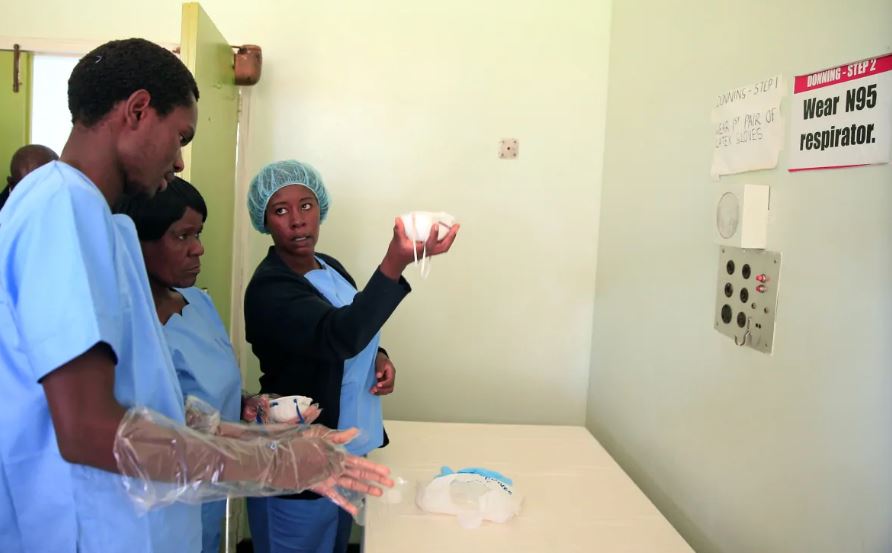Some Zimbabwean health workers undergoing COVID-19 training
Zimbabwe’s public health sector has suffered almost annual strikes by doctors and nurses in the last decade over issues of salaries and conditions of service. Their grievances now include inadequate or old equipment in the hospitals, lack of treatment drugs and protective clothing for workers.
They also complain of overwork, citing shortages of nurses and doctors in some of the country’s major provincial and main hospitals.
On its part, the government says it is in “permanent dialogue” with the nurses and doctors on improving the health system and their conditions, but faces financial constraints due to national economic problems.
As Zimbabwe gears up for a fight against the Coronavirus disease, the doctors and nurses are demanding higher wages and protective clothing.
The following are the number of nurses and doctors in Zimbabwe’s public hospitals:
| NURSES | DOCTORS | |
| Chitungwiza | 533 | 67 |
| Mpilo | 819 | 228 |
| UBH | 676 | 207 |
| Ingutsheni | 241 | 6 |
| Parirenyatwa Hospital | 1,059 | 229 |
| Mashonaland East | 1,523 | 44 |
| Harare Central | 1,224 | 357 |
| Manicaland | 1,687 | 60 |
| Midlands | 1,518 | 55 |
| Masvingo | 1,387 | 50 |
| Matabeleland North | 962 | 22 |
| Matabeleland South | 1,346 | 28 |
| Mashonaland West | 1,411 | 33 |
| Mashonaland central | 967 | 28 |
| Total | 15 353 | 1414 |
MOHCC as at February 2020
Source – Health Services Board
Do you want to use our content? Click Here












